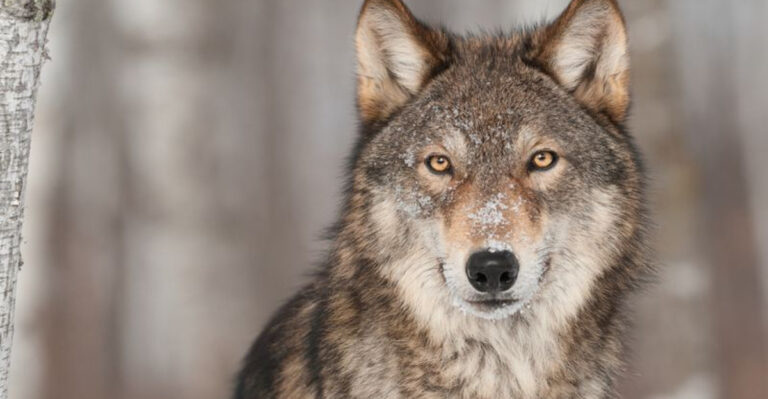15 Compelling Reasons Cats And Dogs Are Better Together

Ever wondered if cats and dogs can really get along? Despite what cartoons show us, these furry friends can make an amazing team in your home.
When cats and dogs live together, they create a special kind of magic that brings joy, balance, and endless entertainment.
Let’s explore why these supposedly opposite pets actually complement each other perfectly!
1. Double The Love, Double The Cuddles
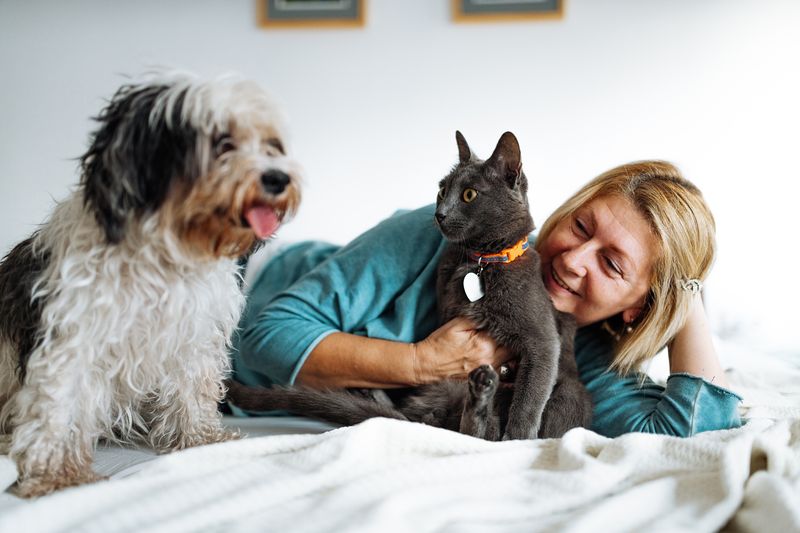
Nothing beats coming home to not just one, but two different types of animal affection. Dogs greet you at the door with tail-wagging enthusiasm while cats offer their subtle purring comfort later when you settle down.
These different expressions of love complement each other perfectly. Your dog might shower you with kisses after a hard day, while your cat curls up on your lap during quiet evening moments.
Together they ensure you’re never without companionship, creating a home filled with constant affection. Their different cuddling styles mean you’ll always have the right furry friend for your mood.
2. Balance Of Energy Levels

Dogs bring boundless energy to your household with their playful antics and need for regular exercise. Their enthusiasm gets everyone moving, including sometimes reluctant family members who might otherwise stay glued to screens.
Cats balance this dynamic perfectly with their calm, relaxing presence. After an energetic play session or walk with your dog, your cat offers the perfect excuse to slow down and appreciate quiet moments.
This natural yin and yang creates a harmonious household rhythm. You’ll enjoy both active playtime and peaceful relaxation without feeling like you’re neglecting either pet’s needs.
3. Complementary Social Skills
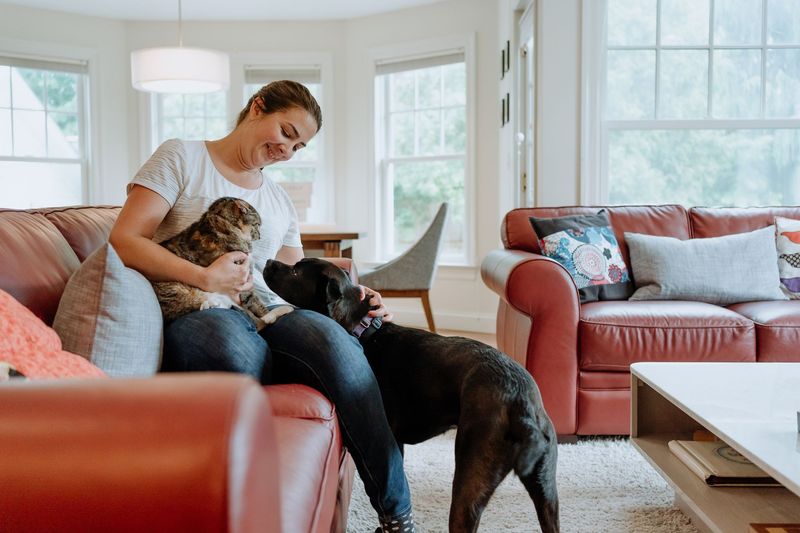
Dogs serve as excellent social butterflies for your household. They enthusiastically welcome visitors, helping shy family members break the ice when guests arrive. Their friendly nature creates an instantly warm atmosphere.
Meanwhile, cats teach valuable lessons about consent and boundaries. They show that relationships should develop at their own pace and that personal space matters – important social concepts for everyone to understand.
Together, they create a balanced social education. Children growing up with both animals learn when to be outgoing and friendly like dogs, and when to respect personal boundaries like cats – essential skills for healthy relationships.
4. Different Grooming Habits, Fewer Messes
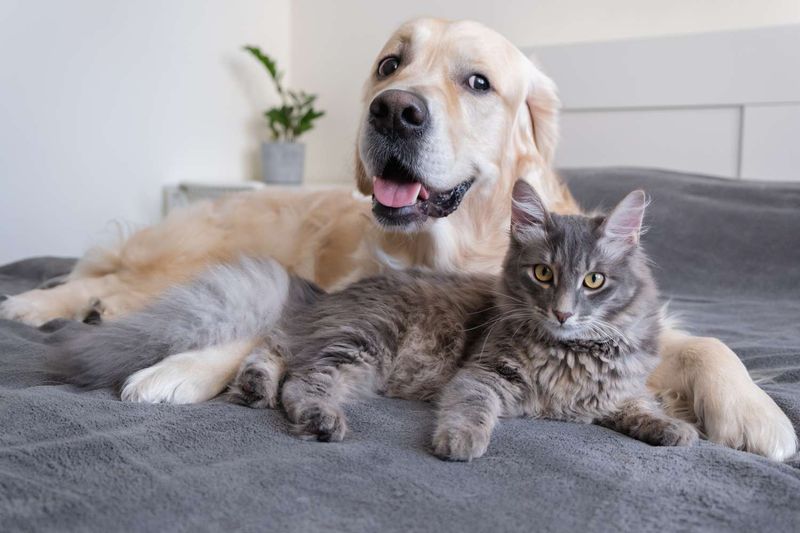
Cats are nature’s neat freaks, spending hours each day meticulously cleaning themselves. Their fastidious grooming habits often extend to their surroundings, making them surprisingly tidy housemates despite their reputation for knocking things over.
Dogs, while not as self-sufficient in the cleanliness department, bring their own benefits. Their outdoor adventures help satisfy their curiosity without the indoor exploration that sometimes leads cats to counter-surfing or shelf-climbing.
When living together, these pets often influence each other’s behavior. Many cat-dog households report that their dogs become slightly neater while their cats become more relaxed about occasional messes – creating a more balanced home.
5. Built-in Entertainment System
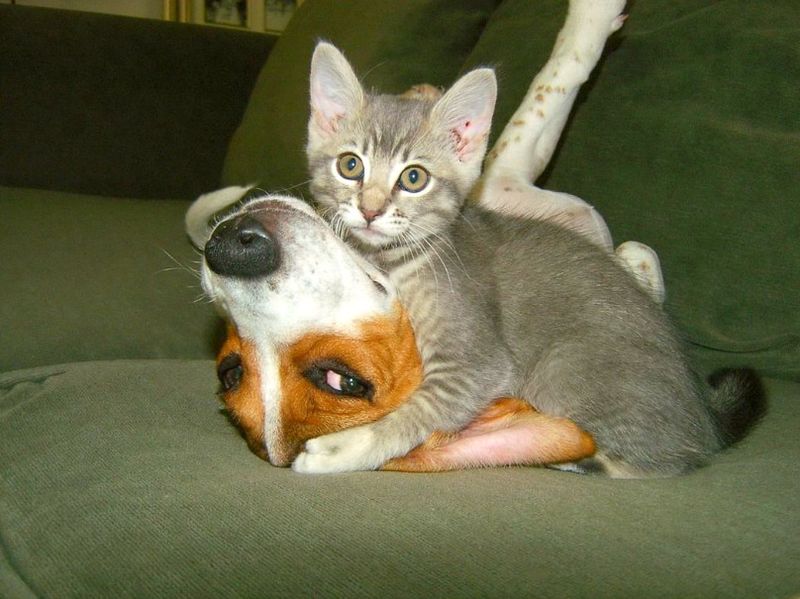
Forget television subscriptions – a cat and dog duo provides endless entertainment! Their different play styles and interactions create daily comedy shows right in your living room.
Dogs with their goofy, enthusiastic play contrasted with cats’ calculated pounces and acrobatics never gets old. Morning chase games, afternoon wrestling matches, and evening cuddle piles become your new favorite shows.
Even their misunderstandings can be adorably funny, like when your dog doesn’t understand why the cat won’t fetch or your cat watches in confusion as your dog rolls in something smelly.
Best of all, this entertainment comes with health benefits – laughter reduces stress and strengthens your bond with both animals.
6. Shared Learning Experiences
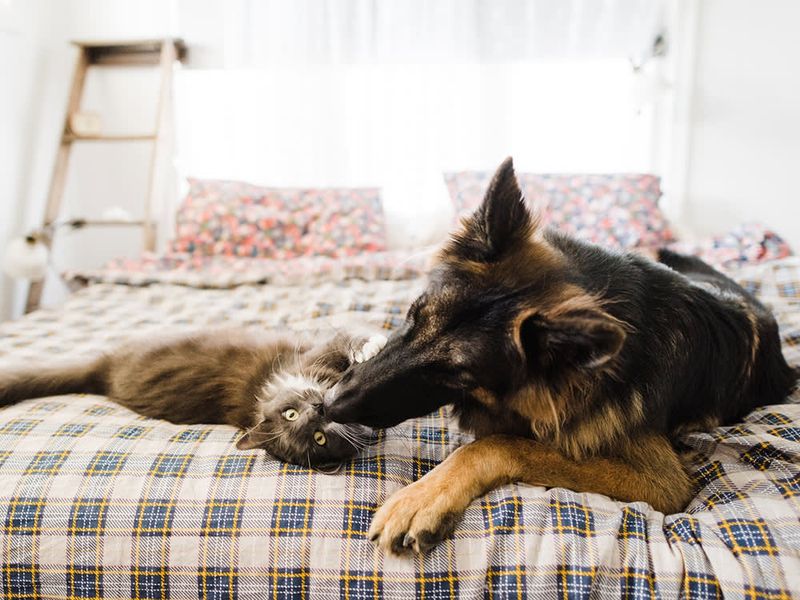
Dogs can teach cats valuable social skills they might otherwise miss. Many cat owners with dogs notice their felines become more responsive to human cues and more comfortable with handling after watching their canine housemates enjoy these interactions.
Cats return the favor by teaching dogs patience and subtlety. Dogs living with cats often develop more careful movement patterns and learn to read body language better – skills that help them in all their relationships.
This mutual education extends to humans too. Watching how different species communicate helps us become more attentive to non-verbal cues and more patient with different communication styles in our human relationships.
7. Security Team With Different Specialties

Dogs act as your frontline security system with their alert barking and protective instincts. Their keen hearing detects unusual sounds outside long before humans notice anything amiss, providing early warnings of visitors or potential concerns.
Cats complement this system perfectly with their more subtle surveillance skills. Their exceptional night vision and sensitivity to small movements means they notice details dogs might miss – like that mouse in the pantry or unusual insect activity.
Together, they form an unbeatable security duo covering all bases. Many pet owners report feeling significantly safer with both animals in the house, knowing different types of potential problems will be detected by one pet or the other.
8. Health Benefits For Different Needs
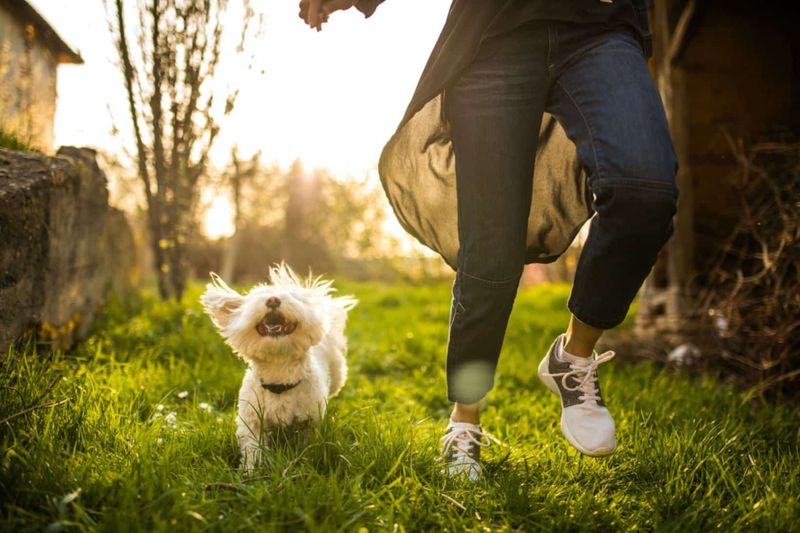
Dogs encourage regular exercise with their need for walks and active play. This built-in fitness buddy system helps family members maintain cardiovascular health and establish consistent outdoor routines regardless of weather or motivation levels.
Cats offer stress-reduction through their calming purrs and gentle presence. Research shows cat purring occurs at frequencies that promote healing and reduce anxiety – nature’s perfect stress management system built into your feline friend.
Having both pets means your household benefits from both types of health support. Active family members get their exercise partner while those needing calm find a purring companion – creating a home environment that supports complete physical and emotional wellness.
9. Bridging Different Personality Types

In families with diverse personality types, cats and dogs help bridge communication gaps. Extroverted family members naturally connect with the dog’s outgoing nature, while introverts often find a kindred spirit in the cat’s independent, quieter demeanor.
These connections create common ground for otherwise different family members. A teenage introvert and their extroverted parent might find themselves sharing stories about the cat’s latest hiding spot or the dog’s beach adventure – conversations that might not happen otherwise.
Having both animals helps everyone appreciate different temperaments. Family members learn to value both the enthusiastic greetings of the dog and the earned trust of the cat – fostering respect for different personality styles.
10. Complementary Alertness Schedules

Dogs and cats operate on different internal clocks that together provide round-the-clock companionship. Dogs typically match human schedules, active during daylight hours and sleeping soundly at night, making them perfect daytime companions.
Cats, with their crepuscular nature (most active at dawn and dusk), become more lively when dogs wind down. This natural rhythm means someone is always alert in your household, providing companionship for early risers, night owls, and everyone in between.
For people with varying schedules, this tag-team approach ensures no family member feels left out. Night-shift workers have a cat ready for playtime when they return home, while traditional schedules align perfectly with the dog’s routine.
11. Different Comfort Styles For Every Mood
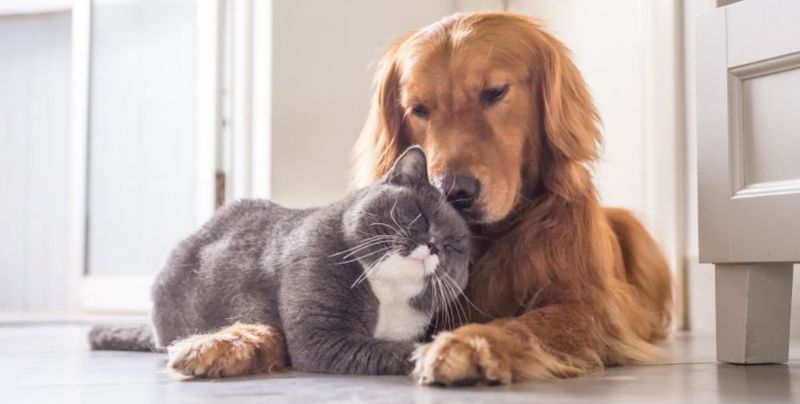
Feeling energetic and playful? Your dog’s enthusiastic response to a game of fetch or tug-of-war matches that mood perfectly. Their exuberant play style helps channel excess energy and turns restlessness into joy-filled activity. Having a quiet, contemplative day?
Your cat’s gentle presence beside you, perhaps with soft purring but minimal demands, creates the perfect atmosphere for reading, working, or just thinking. This variety means your emotional needs are always met.
Whether you need a workout partner, a quiet companion, or something in between, having both cats and dogs ensures you’ll have the right emotional support for any situation – like having a full spectrum of comfort options always available.
12. Diverse Problem-Solving Approaches

Dogs tackle problems with enthusiasm and persistence. When faced with a challenge like a hidden treat or new toy, they’ll try different physical approaches – digging, pawing, or even asking humans for help with those irresistible puppy eyes.
Cats bring a more calculated, patient approach to challenges. They’ll observe, plan, and execute precise movements to achieve their goals, often finding surprisingly creative solutions that dogs might miss.
Watching these different problem-solving styles helps humans, especially children, understand there are multiple valid approaches to challenges.
This natural demonstration of diverse thinking encourages flexibility and creativity in everyone who observes these furry problem-solvers at work.
13. Weather-Appropriate Activity Partners

Rain or shine, you’ll have the perfect pet companion with a cat-dog household. Dogs thrive in outdoor weather conditions that might send cats hiding under the bed. Their enthusiasm for splashing in puddles or bounding through snow makes even dreary days feel adventurous.
When summer heat strikes or winter storms howl, cats excel at indoor entertainment. Their talent for turning household objects into toys and creating games out of seemingly nothing keeps cabin fever at bay during weather extremes.
This natural division of labor means your activity needs are covered year-round. No more feeling guilty about skipping dog walks during thunderstorms or lacking outdoor time during beautiful weather – your pet team has you covered for all conditions.
14. Broadened Empathy Development
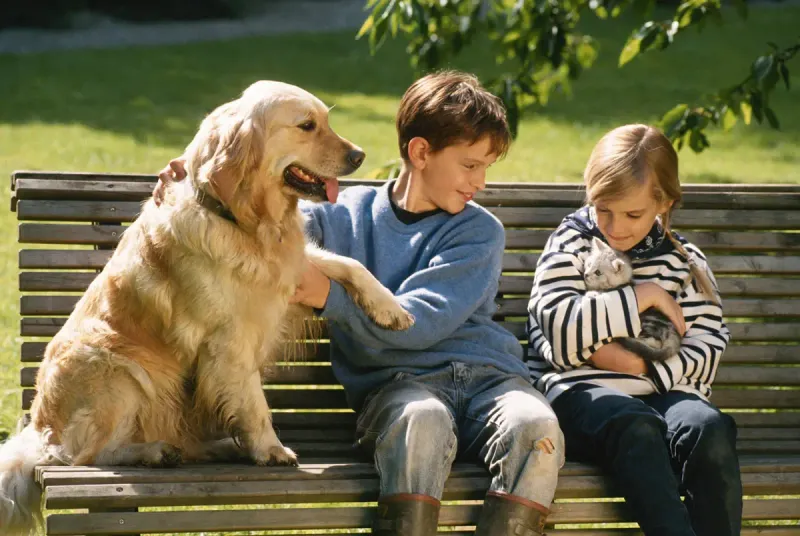
Children growing up with both cats and dogs develop nuanced understanding of different communication styles. They learn to recognize the direct, expressive body language of dogs alongside the subtle ear positions and tail movements that reveal a cat’s feelings.
This early exposure to different ways of expressing needs and emotions creates a foundation for exceptional emotional intelligence. Kids discover that friendship doesn’t always look the same – sometimes it’s exuberant like a dog’s greeting, other times quiet like a cat choosing to sleep on your bed.
Research suggests this multi-species household experience translates to better human relationships. Children from homes with both cats and dogs often show greater patience with different communication styles and more flexibility in their friendship approaches.
15. Expanded Social Circles
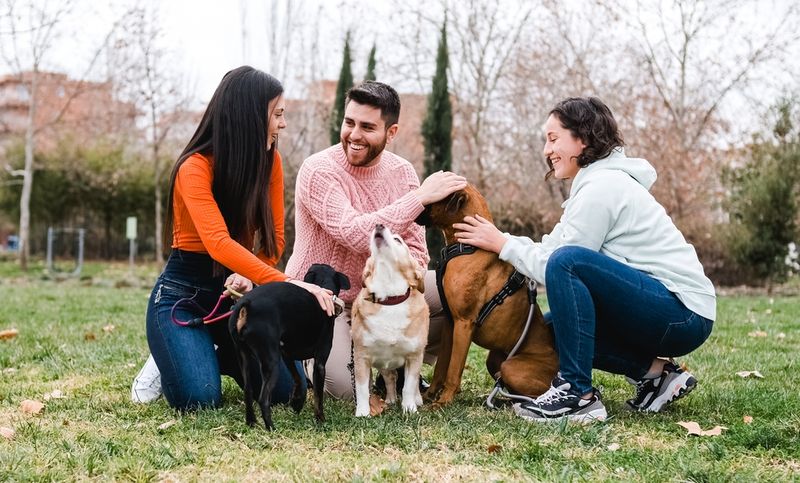
Having both cats and dogs naturally expands your social connections. Dog parks and walking routes bring you into regular contact with other dog owners, creating neighborhood connections and friendships built around shared experiences and daily routines.
Cat ownership connects you to a different community. From online cat forums to conversations with other feline enthusiasts at the vet’s office, you’ll find yourself part of cat-specific social circles that might never intersect with dog-centric groups.
This pet diversity makes you a bridge between different animal-loving communities. You can share insights from both worlds, introduce dog people to cat people, and enjoy twice the pet-related social opportunities – expanding your human connections through your animals.





